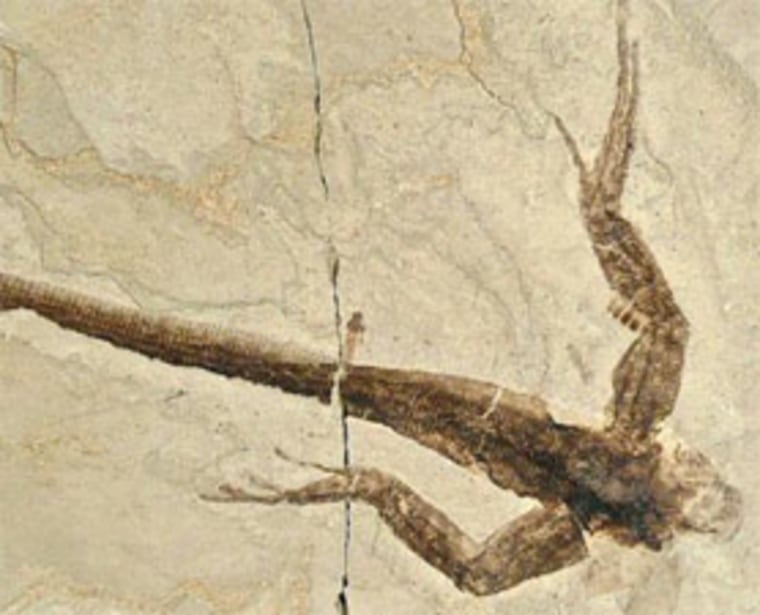We mostly know of dinosaurs and other prehistoric animals by their now lifeless fossils. But the remains of a 50-million-year-old reptile from Utah have just yielded organic compounds that scientists have imaged in vivid detail, according to new research.
These compounds, or protein residues, originate from the ancient unidentified reptile's skin, and once served as this animal's building blocks of life, conclude the authors of the study, published in the latest issue of the journal Proceedings of the Royal Society B: Biology.
The research was conducted by some of the same scientists who investigated the famous "dinosaur mummy," a 66-million-year-old hadrosaur believed to retain organic molecules and soft tissue skin structures.
"The hadrosaur 'mummy' was poorly consolidated and therefore we could not map organic components within the skin," co-author Roy Wogelius told Discovery News. "Here, the rock is well consolidated, and this allowed us to produce the first ever infrared maps of organic residue in fossil skin tissue. In doing this, we reveal that protein residue, most likely derived from the original skin, still maintains a reptilian scale pattern with exceptional fidelity."
Wogelius, a scientist in the University of Manchester's School of Earth, Atmospheric and Environmental Sciences, added that the new study also presents "the first ever X-ray maps of organic sulfur in a fossil of any type, which correlate with, and confirm, the infrared maps."
Infrared light allowed Wogelius and his colleagues to "see" the internal details of the reptile, which was unearthed at Utah's Green River Formation. Based on its remains, the scientists believe the animal was bitten in half, leaving behind its lower half.
The high-tech light causes vibrations in the reptile's fossilized skin. If organic compounds are present, they absorb portions of the beam and alter the reflected signal. That's exactly what happened, according to the study, permitting the researchers to view the protein residue and its chemical details.
"Organic" refers to the fact "that these compounds are degraded, but not completely destroyed, and thereby reveal some of their original character," Wogelius explained. "Rather like salvaging a scorched photograph from a fire, much of the detail might be missing, but you might still be able to identify strong features, such as faces or unique buildings."
In this case, the features reveal the prehistoric reptile's skin, which resembles that of modern lizards. Trace metals associated with color are present, but the scientists aren't certain what hues this animal sported.
The researchers believe these trace metals, along with the protein residue, are not due to contamination. They point out that the skin contains no evidence of modern microbial activity, the organic compound inventory in the skin is completely different from plant matter also present in the Green River Formation, and the only other fossil where they found these types of compounds was in a second fossilized reptile skin sample.
The scientists suspect that when animal skin begins to break down, its compounds can form chemical bonds with trace metals. Under ideal chemical, climate and other conditions, these trace metals act like a bridge to minerals in the sediment, protecting the skin material from being washed away or decomposing further.
Mary Higby Schweitzer, a professor at North Carolina State University and one of the world's leading paleontologists, told Discovery News that she welcomes "any attempt to use analytical technology to bring about a better understanding of the fossil record."
"The paper is really intriguing, but I definitely think more work needs to be done using some alternative methodologies to buttress the argument," she said. "I think they show the presence of organics with the fossilized tissue, but the source of these organics is still open to debate. … Beautiful preservation though."
As to whether or not such research puts science a step closer to piecing together genomes for extinct, prehistoric animals and to possibly even reproducing these species, Wogelius had a two-word response: "No comment."
